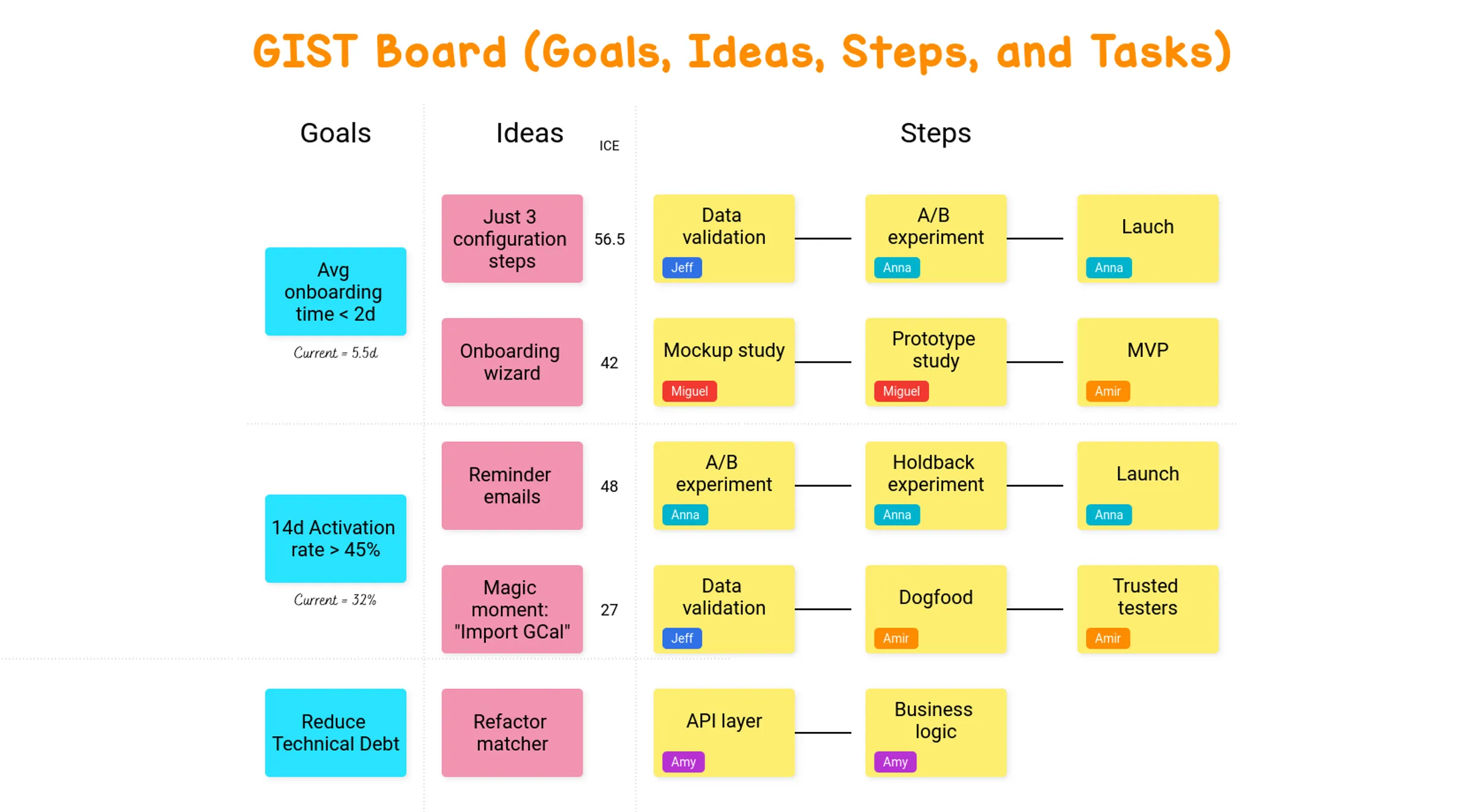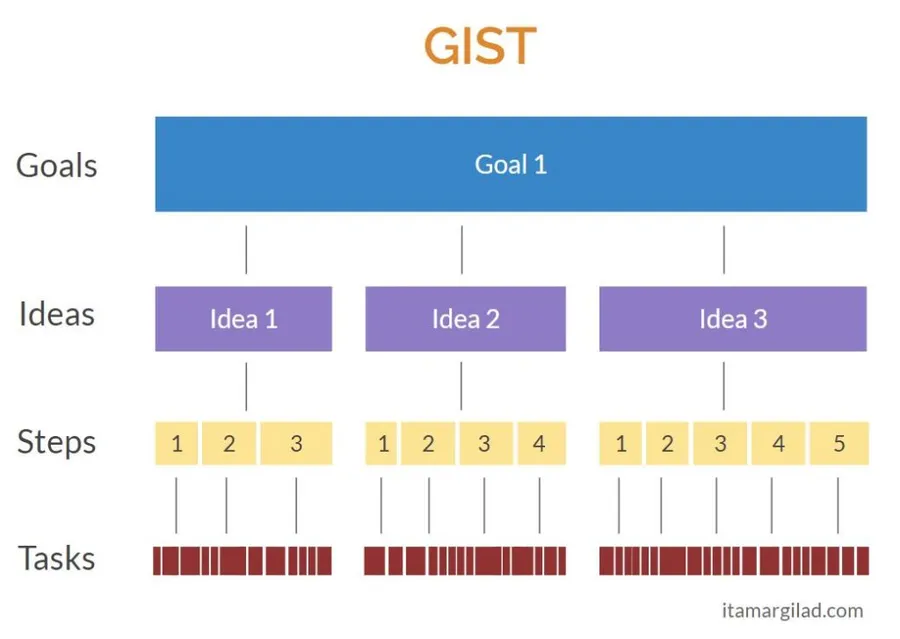GIST Board

What is the GIST Framework?
GIST stands for Goals, Ideas, Steps, andTasks. This framework, created by author and Product Management coach Itamar Gilad, seeks to help make the planning and execution of strategic initiatives more lightweight and agile overall.
The GIST Framework is made up of four components, each having its own planning functions and frequency for making updates and modifications:
- Goals are the outcomes you hope to achieve. Companies and teams typically set goals quarterly – using tools like the OKR Framework – to make goal-setting more timely and manageable to achieve. But companies often have yearly goals as well that are fueled by those quarterly goals. The GIST Framework makes it easy to change goals during any given goal cycle, especially if the current goals are no longer relevant or important.
- Ideas are potential ways that the goals (from above) can be achieved. This includes new product features, design changes, and beyond. There is no limit to how many ideas can be added to the mix. This creates a space where they can be continuously added, considered, and evaluated.
- Steps are short projects or activities that help bring an idea to life – sometimes just in concept form – for testing and validation purposes. This may include things like data analysis, surveys, Wizard-of-Oz tests, early-adopter programs, A/B tests, etc.
- Tasks are the day-to-day work items – directly connected to the above Goals, Ideas, and Steps – that teams typically manage with Kanban Boards or Scrum systems.

What is the GIST Board for?
The GIST Board helps you identify, monitor, and manage the work being performed by your team. It helps create a shared understanding between team members while also giving managers and other stakeholders a clear view of the progress being made.
Each GIST Board begins with an overarching Goal – defined as a Key Result – with a value assigned to define what goal achievement looks like. On the next level of the board, you list out the various Ideas that can help achieve that Goal along with their ICE scores (if you use that scoring method). Then, as you may have guessed, the Ideas are broken down into 2-5 key Steps that can be used to further develop and test different Ideas. And finally, at the very bottom are all of the tasks required to bring that work to life.
Pro-Tip: It’s best practice to assign an “owner” to each Step to ensure accountability.
It’s important to keep in mind that the GIST Board can change often. This happens when updates are made related to a Goal’s progress, Ideas fail in the “experiment phase” and, thus, are removed (and new Ideas are added in their place), completed Steps are taken out, and beyond. To keep this information up-to-date at all times, it’s recommended for teams to meet and review the GIST Board at least every other week, especially in advance of planning the next Agile cycle.
Suggested resources to learn about the GIST Framework
- Itamar Gilad’s article introducing the GIST Framework: Why you should stop using product roadmaps and try the GIST Framework, by Steven Mullen, Sales & Marketing specialist.
- Itamar Gilad’s blog post explains how to use the GIST Board to plan and execute strategic initiatives in a more Agile way: The GIST Board and Other GIST Tools